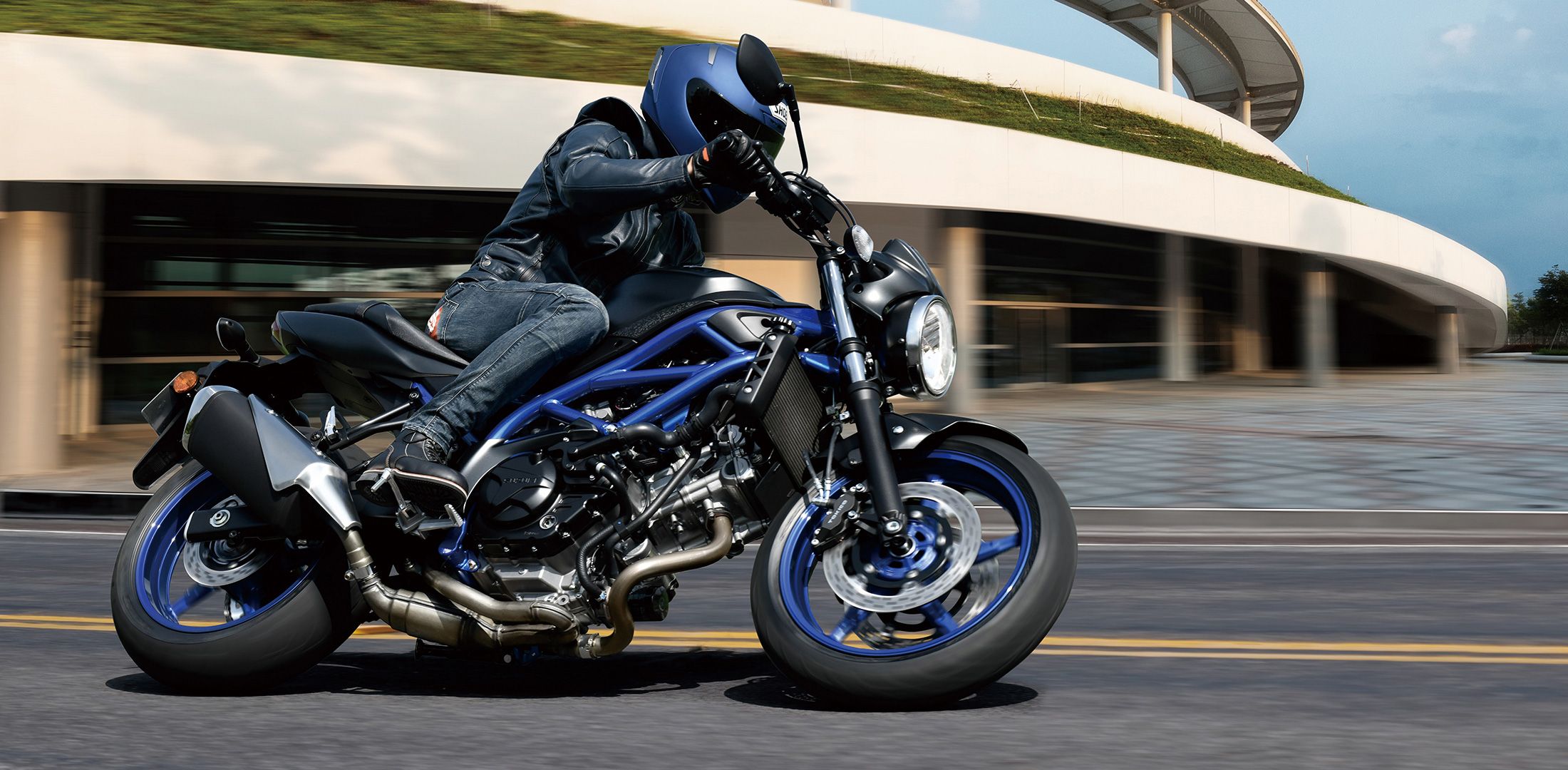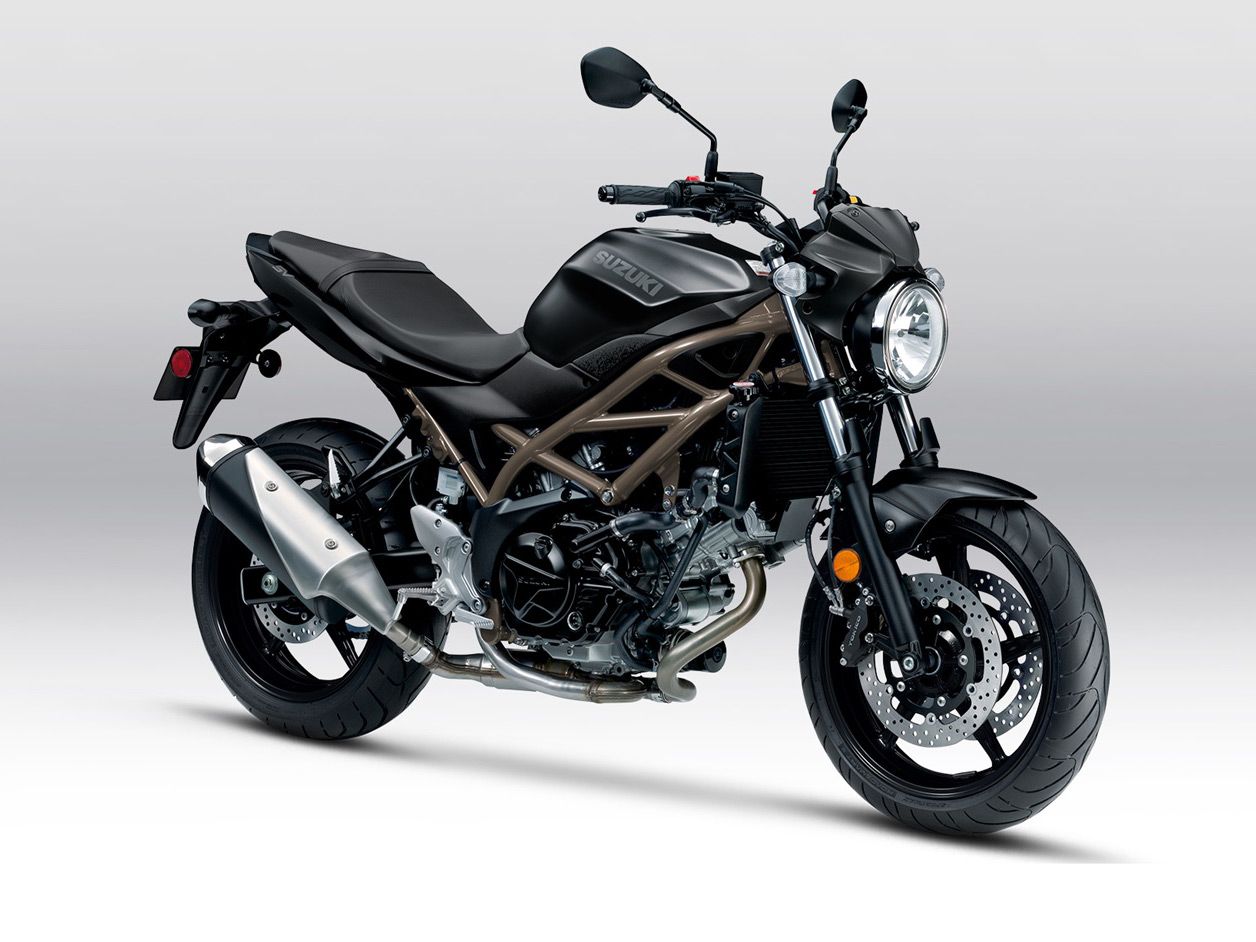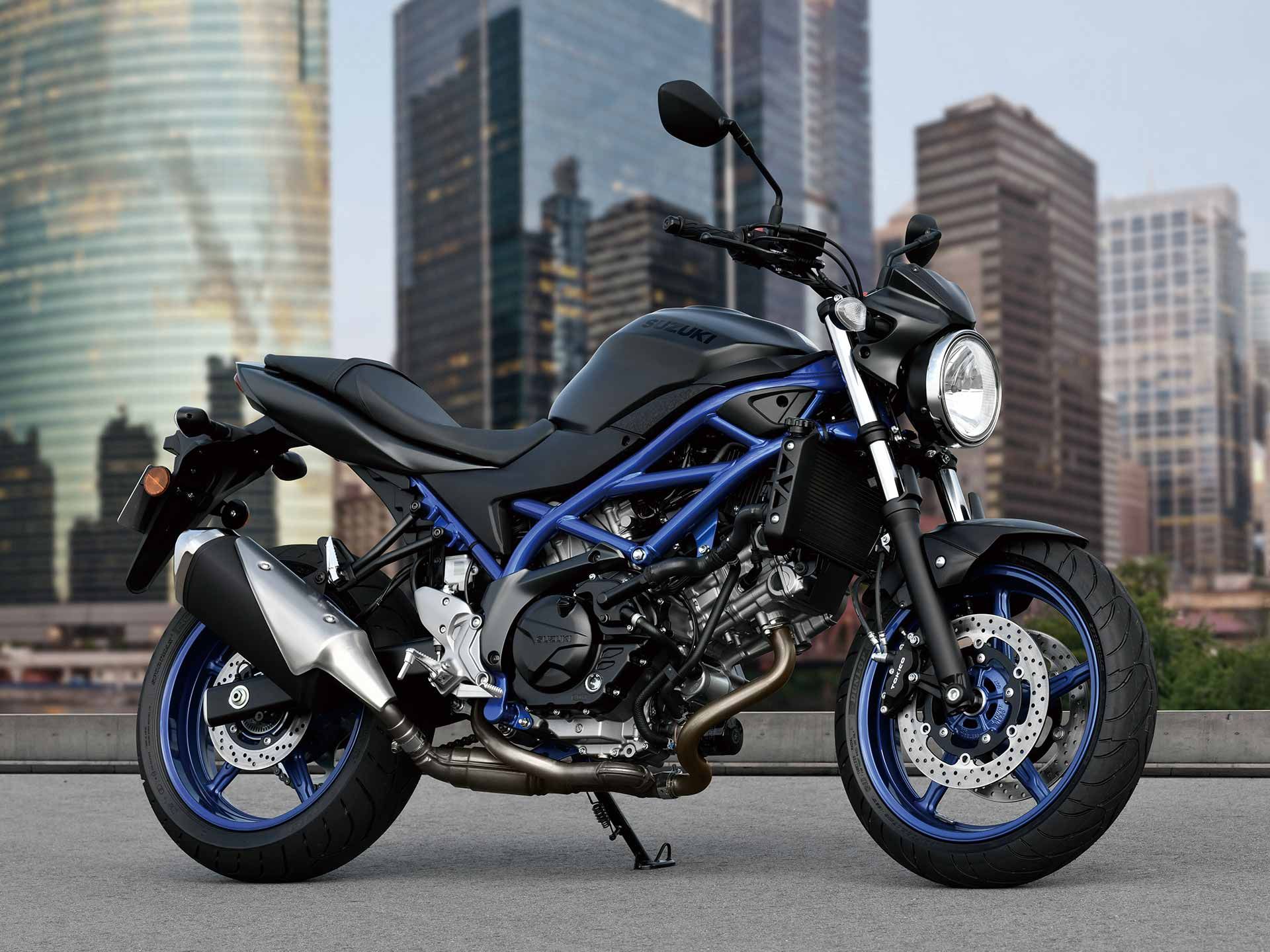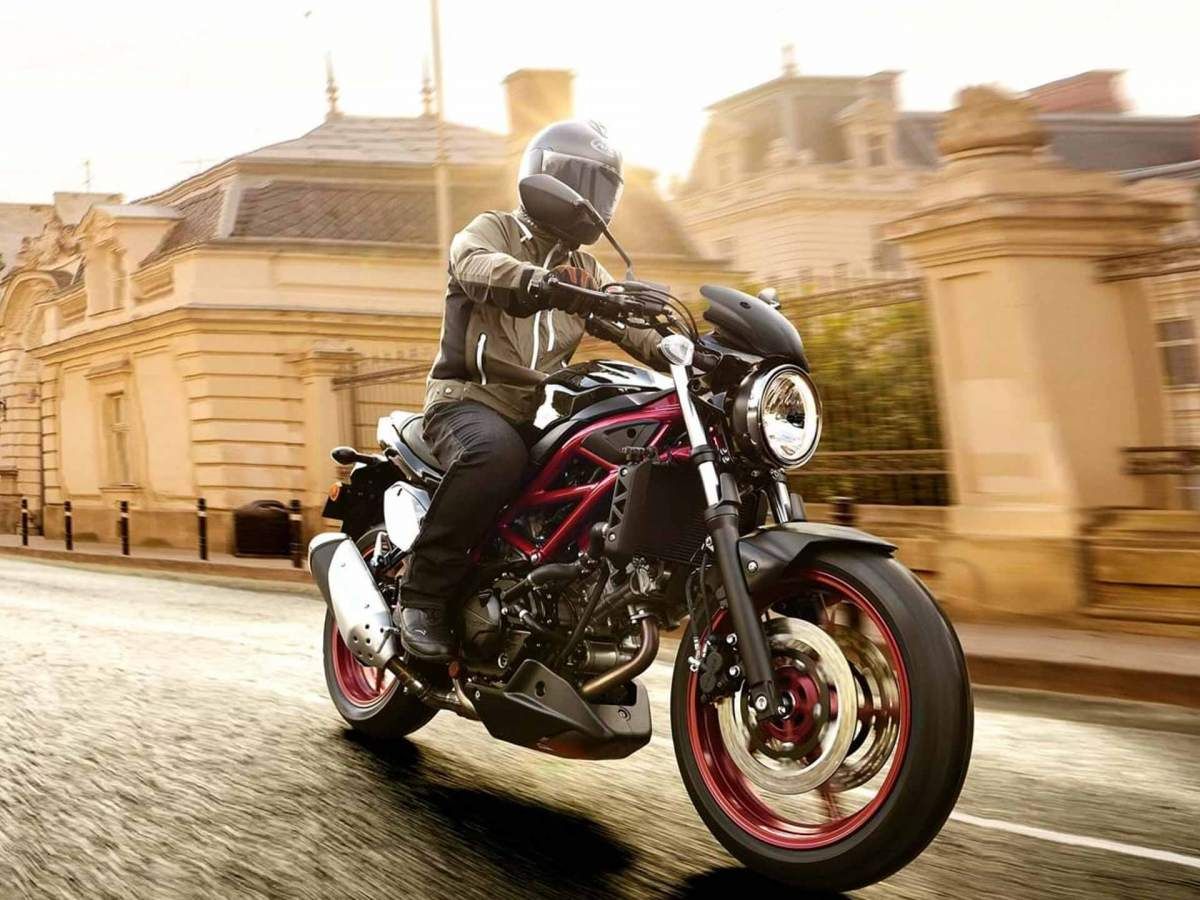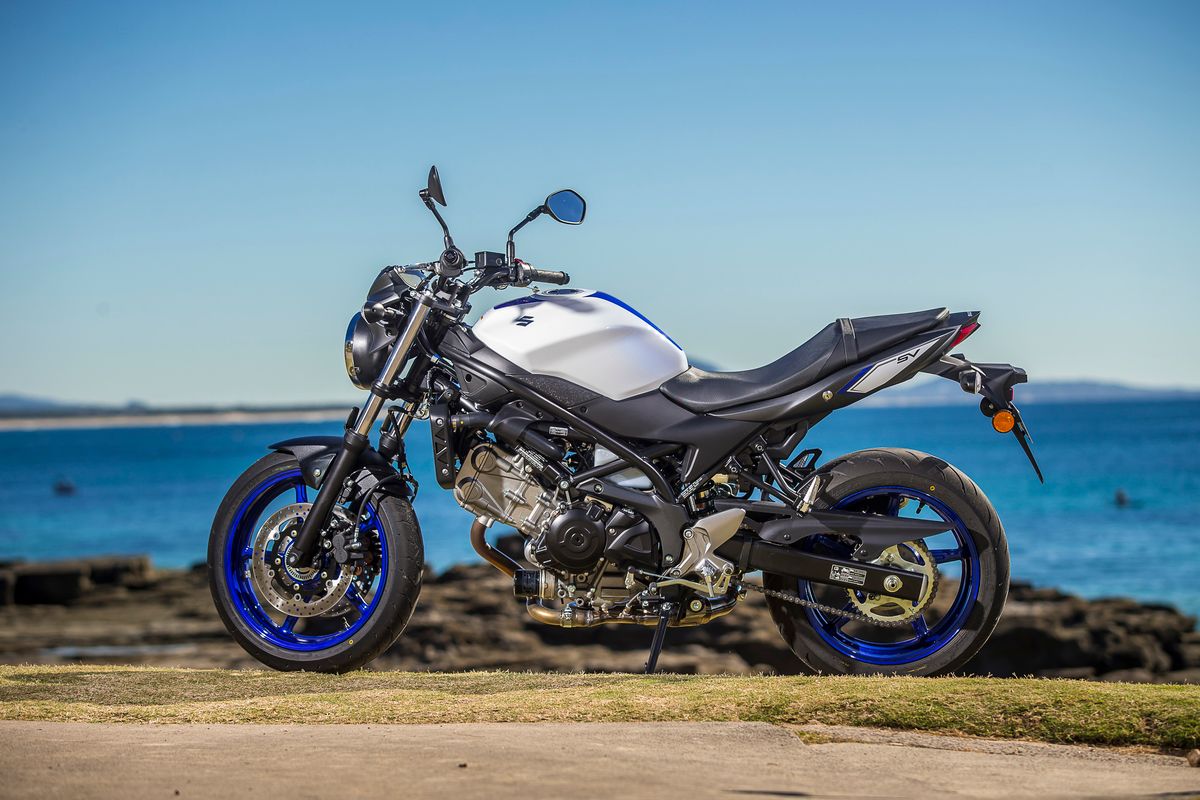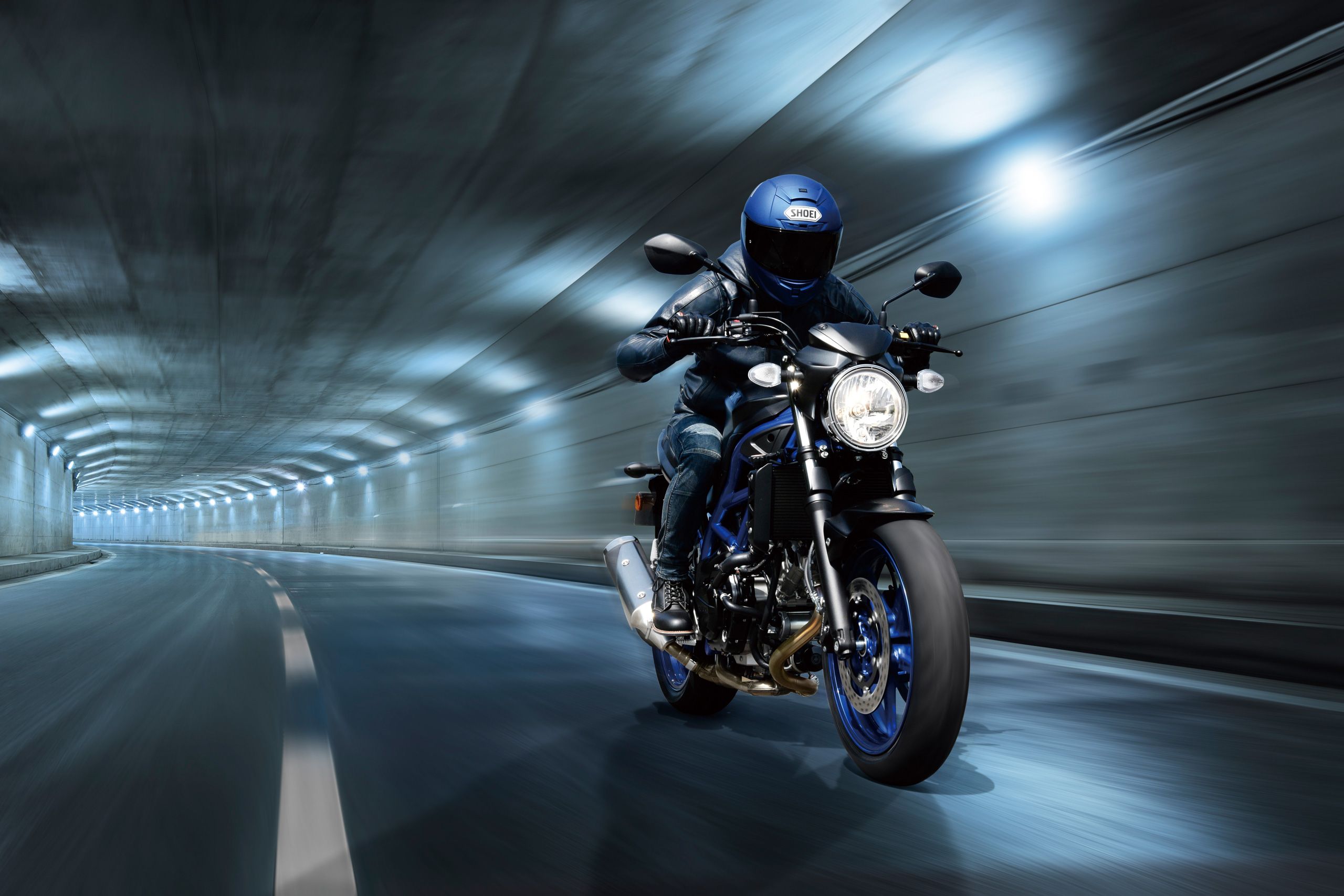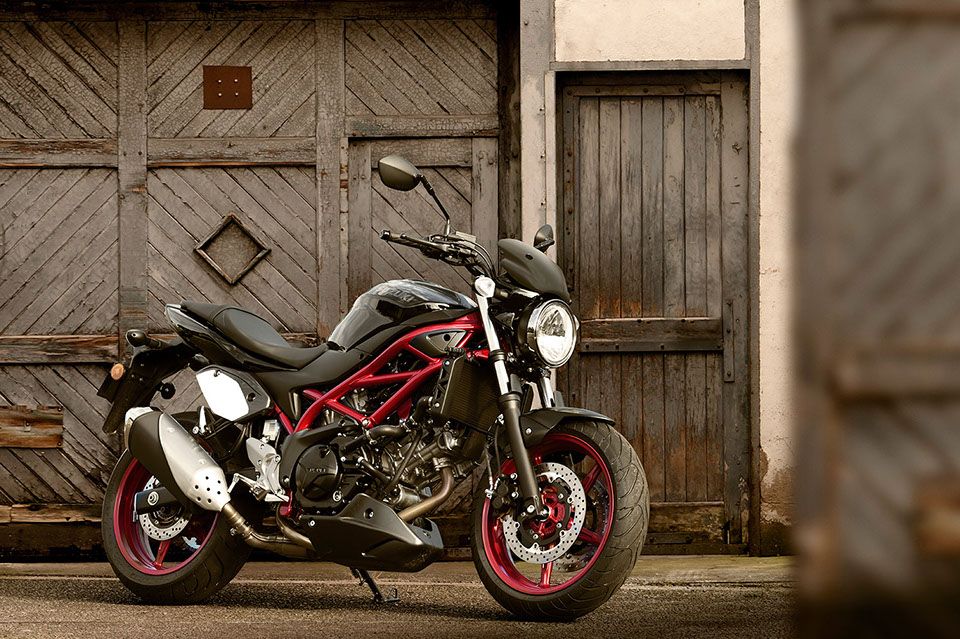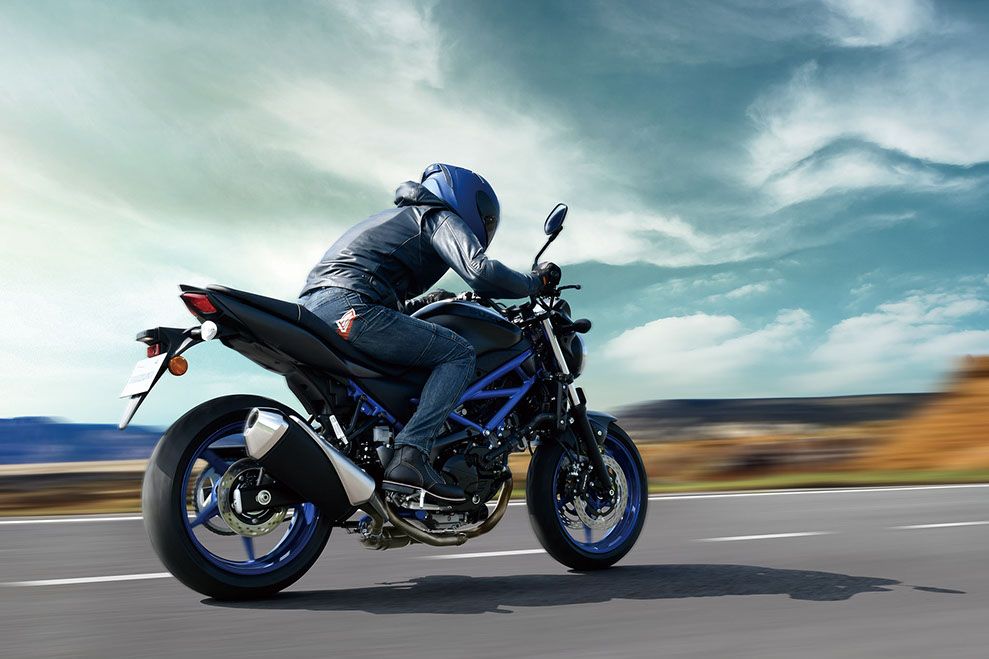Recent spy shots suggest that Suzuki is about to quit an outdated but bulletproof V-twin engine like the V650 and V-Strom DL650 for a much more modern parallel twin design, following the example of Yamaha, BMW and KTM. This will be sad news for Suzuki fans, as the SV650 engine was something quite unique in the light roadster world. Suzuki hasn’t said anything about when the V-twin engine will be phased out, so let’s enjoy it while we still can and celebrate this iconic engine and the brilliance of the SV650.
10/10 A legend was born
The front three-quarters of the SV650, Suzuki’s most popular model
Suzuki introduced the V-twin SV650 in 1999, competing against the likes of the Kawasaki Ninja 500R, Honda NT650 and even Suzuki’s own GS500. The GS500 and Ninja 500R were both parallel twins, and the Honda had a narrow-angle V-twin. At the time, the market for “bare” bikes, meaning bikes without a fairing, was growing in both Europe and America, although customers still wanted fairings of some sort, so two models of the SV650 were offered: the bare SV650 and the fairing. SV650S. The combination of a light, stiff chassis, strong and predictable handling and a powerful V-twin engine created a bike that was attractive not only to beginners but also to those with a lot of experience. The SV650 was both easy to drive and relatively cheap to buy, making it a hit for Suzuki.
9/10 The battle still rages
Side profile shot of the Suzuki SV650 with the V-twin engine
If the market was pretty crowded when the SV650 was introduced, it’s nothing compared to the opposition it faces today. BMW offers the F850 series, Yamaha MT-07 Range, KTM st 790 and 890 ranges, Kawasaki st Z650Triumph Trident 660Aprilia Tuono 660Honda CBR500, CBR650and NC750, and the list goes on. However, the Suzuki is still the only bike in this class with a V-shaped bike that is the mainstay for many. Overall, the Suzuki SV650 is a simple bike with minimal electronics, a simple chassis and relatively low performance suspension and brakes. But it’s also full of character, with excellent mid-range torque and a nice handling chassis. It also has true V-twin torque and soundtrack, although these are effectively copied by the parallel-engine hordes, which with their 270° cranks resemble V-twin characteristics. One of the drawbacks of the SV650 engine is the 90° angle between the cylinders. This makes it a very long engine, which compromises packaging and explains why the parallel twin with uneven ignition is now seen as the better engine in terms of packaging, but loses nothing to the V-twin in terms of character and torque.
8/10 An engine that just won’t die
Shot of a red and white Suzuki SV650 street riding
It has been said that after a nuclear holocaust Suzuki SV650s will be ridden by cockroaches as they will be the only things that can survive! To be sure, the SV650’s V-twin engine is practically bulletproof. This has a lot to do with the relatively mild tuning state that will never overload the engine, but it also has a lot to do with Suzuki engineering, which may seem a bit dull and boring on the surface, but it also means that the company builds engines that last and last. The 90° V-twin has perfect primary balance, so it doesn’t require a balance shaft to add weight, complications and wear. There are various forums online for SV650 owners that claim that a well-maintained V-twin SV650 engine will easily last over 100,000 miles before needing major mechanical assistance. And these aren’t the kind of engines that have never seen the red line on the tach: the SV650’s engine demands to be driven hard, and it can handle just about any punishment a rider can dish out. Because it’s so popular, Suzuki regularly updates it to improve and deal with any potential trouble spots.
7/10 So why is Suzuki ditching the V-twin?
A side view of the Suzuki SV650, just one of many light sport bikes
A parallel twin has many advantages over a V-twin. The main advantages are packaging and simplicity. The parallel twin engine is more compact and has fewer components – one set of barrels, one cylinder head and better cooling, all of which make it easier to manufacture, not to mention easier to meet increasingly stringent emissions regulations. Because it’s physically smaller, the parallel twin makes it easier to dial in better chassis dynamics. One of the disadvantages of the parallel twin is the need for the added complexity of the balance shaft, but this disadvantage is balanced by other advantages.
6/10 Simplicity is the key to the SV650
Suzuki SV650 driving through the tunnel
The Suzuki SV650 is a simple motorcycle, which only adds to its appeal. The suspension is dialed in perfectly from the factory and there is no adjustment other than rear shock preload. The brake calipers are from Tokico and clamp dual discs up front and a single disc in the rear. ABS is present, but there are no other rider aids – no traction control or throttle offering different driving modes, for example. The instrument panel is a simple LCD display that shows all the information you need clearly, although the display is a little out of place compared to the latest full-color TFT panels on competing bikes. Expect the SV650 replacement to be much better equipped in this regard. Two useful features are Suzuki’s Easy Start system, which requires a short push of the starter button: the engine will then rev itself until it starts. Also, Suzuki Low-RPM Assist, an anti-stall feature, is very useful.
5/10 Weight and handling
Suzuki SV650 in blue, studio shot
The Suzuki SV650 weighs 437 pounds (with ABS), which is within ten to twenty pounds of the opposition. On the road, it is exceptionally stable, but at the same time it is quite nimble in turns. It’s not as fast as a dedicated sports bike, but that’s part of its charm: it’s softer and more easily reaches its limits, which are still quite high: high enough to please experienced riders, yet docile enough to make beginners feel comfortable and that the bike works with them, not against them.
4/10 Ergonomics
Photo of the Suzuki SV650 with a simple but excellent chassis
The SV650 is a sporty (as opposed to sporty) bike, so the ergonomics are relaxed and comfortable. The wide handlebars provide good leverage when changing direction, and the tank’s seat contact point is narrow, which, along with the relatively low seat height of 30.9 inches, means it’s ideal for shorter riders and beginners who want to easily touch the ground. confidence.
3/10 Age is an advantage
A static shot from the offside of a Suzuki SV650
Being around virtually unchanged for so long is certainly an advantage, as Suzuki has been able to engage in a sustainable development program that has eliminated any of the few issues that have arisen in daily use by owners. However, the original design was so good that some tweaks were needed. All this creates a motorcycle that is as reliable and bulletproof as possible, while the riding experience has undergone the same light tuning to make it one of the most fun bikes you can buy, suitable for any purpose you decide to put it yes
2/10 Power and torque
Side shot of a red and black Suzuki SV650
75 horsepower and 47.2 lb-ft of torque may not sound like a lot, but every single pony and every foot-pound of torque is so readily available that it feels like there’s a lot more on offer. On the open road, on the highway, through canyons, or cruising down city streets, the SV650’s V-engine feels like it has a lot of quirks, but none of them are harmful. Instead, you get perfect throttle response at all revs and a burst of power no matter what speed you’re in or what gear you’re in. Carrying a passenger doesn’t upset the engine’s balance at all, and you can have just as much fun playing together as a solo rider.
1/10 Prices and models
Suzuki SV650 highway sprint
Prices for the Suzuki SV650 start at $7,299 for the non-ABS model. With ABS it costs $7,749. Then there’s the café racer-style SV650X, which retails for $8,400. If you want a V-twin engine, but not in a bare-bones roadster, you can also opt for the V-Strom DL650 adventure bike, which retails for $8,904 and might just be one of the best adventure bikes to share the SV650’s rugged engine. and to be commendably simple, with very few bugs, but with excellent off-road ability.
FAQ
Question: There is. Is the SV650 a good beginner bike?
Yes, the Suzuki SV650 is a great entry-level bike thanks to its light weight, low seat height and fearless performance.
Q: How much horsepower does the SV650 have?
Suzuki SV650’s V-twin engine produces 75 horsepower and 47.2 lb-ft of torque
Q: How reliable is the SV650?
The Suzuki SV650 is one of the most reliable motorcycles you can buy, with many owners reporting trouble-free mileage of up to 100,000 miles, subject to regular maintenance.
https://www.topspeed.com/is-the-sv650-suzukis-best-bike/

